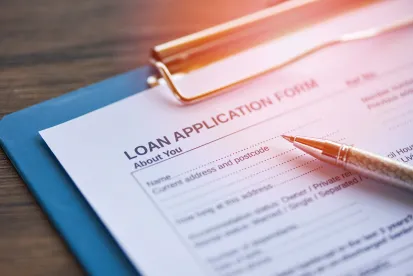This client alert is the second of a two part series concerning the Save Our Stages Act (the “SOS Act”), which became law on December 27, 2020 as Section 324 of the Economic Aid to Hard-Hit Small Business, Nonprofits, and Venues Act (the “Economic Aid Act”, comprising Title III of Division N of the Consolidated Appropriations Act, 2021). The SOS Act establishes a new grant program (the “SOS Program”, also known as the “grant program for shuttered venue operators”) to be administered by the Small Business Administration (“SBA”) to aid certain financially distressed venue operators, event promoters or producers, and talent representatives.
In our first client alert, we summarized the eligibility requirements of the SOS Program. In this alert, we address the issuance of grants under the SOS Program (each, an “SOS Grant”), including the SOS Grant application process, staged prioritization and timing of SOS Grant approvals, including possible supplemental SOS Grants, determination of maximum SOS Grant amounts, and authorized uses of SOS Grant proceeds.
I. SOS Grant Application
As of the date of this client alert, the SBA has yet to release a form of SOS Grant application or to issue any related guidance as to the grant program. We expect the SBA will shortly issue one or more forms of application which applicants will be required to complete and submit, along with supporting documentation that the SBA believes necessary to determine the applicant’s eligibility to receive a SOS Grant and the SOS Grant amount.
The SOS Act requires each SOS Grant applicant to make a good faith certification that “the uncertainty of current economic conditions makes necessary the [SOS Grant] to support [its] the ongoing operations.” This certification is the same necessity certification as is required of applicants for loans under the Paycheck Protection Program (“PPP”). Businesses with between 500 and 10,000 employees that apply for a SOS Grant may also be required to make good faith certifications regarding certain aspects of their labor practices.[1]
Unlike with the PPP, the SOS Program will be administered directly by the SBA (and not through PPP loan lenders or other intermediaries). Therefore, applicants will submit their SOS Grant applications directly to the SBA.
II. SOS Grant Prioritization and Grant Approval Timing
Once the SBA initiates the SOS Program, it will commence grant making in two successive 14-day periods, during which it will grant awards totaling up to $12 billion from the SOS Program’s $15 billion of appropriated funds, as follows:
-
During the initial 14-day period, the SBA will only award a SOS Grant (“First Priority SOS Grants”) to an eligible applicant determined to have “revenue” [2] during the period of April 1, 2020 – December 31, 2020 that is no more than 10% of the applicant’s revenue as determined for the corresponding period of April 1, 2019 – December 31, 2019, due to the COVID–19 pandemic;[3] and
-
During the immediately subsequent 14-day period, the SBA will only award a SOS Grant (“Second Priority SOS Grants”) to an eligible applicant determined to have revenue during the period of April 1, 2020 – December 31, 2020 that is no more than 30% of the applicant’s revenue as determined for the corresponding period of April 1, 2019 – December 31, 2019, due to the COVID–19 pandemic.
After the expiration of those two periods, the SBA will then be permitted to award a SOS grant to any eligible applicant from its remaining appropriated funds.
The SBA is required to grant at least $2 billion of its appropriated SOS Program funds to eligible persons and entities that employ 50 or fewer full time employees,[4] though this requirement will sunset on the 60th day following the SBA’s commencement of SOS Grant making (i.e., the SBA will no longer need to set aside funds for the purpose of ensuring SOS Grants can be made to such businesses after such date).
Beginning on the 60th day following the commencement of the initial 14-day grant making period, to the extent that any appropriated funds for the SOS Program remain, the SBA will also be able to award supplemental SOS Grants (each, a “Supplemental SOS Grant”) to eligible applicants that previously received a SOS Grant. That said, the SBA is not to award any Supplemental SOS Grants unless and until the SBA has completed processing (including determining whether to grant an award with respect to) each application for an initial SOS Grant that was submitted on or before such 60th day.
As noted in prior client alerts, a recipient of a PPP loan after the date of enactment of the SOS Act is ineligible to receive a SOS Grant, and conversely a recipient of a SOS Grant is ineligible to receive a PPP loan made under the Economic Aid Act. The PPP loan program, as reauthorized by the Economic Aid Act, expires for the borrowing of new PPP loans as of March 31, 2021, and concern has been publicly expressed that anticipated strong demand for new PPP loans may result in the present Congressional PPP appropriation being exhausted before that date. The above described staged timing for SOS grant making, when considered alongside the potentially brief availability of the reauthorized PPP, may persuade certain eligible persons or entities to make an early and difficult decision to first pursue a PPP loan (with its smaller $2 million maximum loan amount), given the higher certainty as to receipt of funds via a PPP loan.
III. SOS Grant Amount Limits and Other Limitations
For so long as appropriated SOS Program funds remain and subject to the timing rules described above, each eligible person or entity shall be eligible to receive a SOS Grant in an amount equal to the lesser of:
-
(a) for an eligible person or entity that was in operation on January 1, 2019, an amount equal to 45% of such person’s or entity’s gross earned revenue[5] as determined for 2019; or
(b) for an eligible person or entity that began operations after January 1, 2019, an amount equal to the product of (i) such person’s or entity’s average monthly gross earned revenue ad determined for each full month during which it was in operation during 2019, multiplied by (ii) 6;
or
-
$10,000,000.
Each Supplemental SOS Grant will be capped at 50% of the grantee’s initial SOS Grant amount, provided that in no case will a grantee be eligible to receive SOS Grants totaling more than $10 million (as a combination of its initial SOS Grant and its Supplemental SOS Grant).[6]
IV. Allowable and Prohibited Uses of SOS Grant Proceeds
SOS Grant proceeds may be used to pay costs incurred during the period March 1, 2020 – December 31, 2021; provided, however, that proceeds of (i) an initial SOS Grant to the extent not expended on or before the date that is one year after the date of disbursement of such initial SOS Grant, and (ii) a Supplemental SOS Grant to the extent not expended on or before the date that is 18 months after the date of disbursement of such Supplemental SOS Grant, must, in each case be returned to the SBA.
SOS Grant proceeds may be used by the grant recipient for its:
-
payroll costs;
-
payments on any covered rent obligation;
-
any covered utility payment;
-
scheduled payments of interest or principal on any covered mortgage obligation (which shall not include any prepayment of principal on a covered mortgage obligation);
-
scheduled payments of interest or principal on any indebtedness or debt instrument (which shall not include any prepayment of principal) incurred in the ordinary course of business that is a liability of the eligible person or entity and was incurred prior to February 15, 2020;
-
covered worker protection expenditures;[7]
-
payments made to independent contractors, as reported on Form–1099 MISC, not to exceed a total of $100,000 in annual compensation for any individual employee of an independent contractor; and
-
other ordinary and necessary business expenses, including:
-
maintenance expenses;
-
administrative costs, including fees and licensing costs;
-
state and local taxes and fees;
-
operating leases in effect as of February 15, 2020;
-
payments required for insurance on any insurance policy; and
-
advertising, production transportation, and capital expenditures related to producing a theatrical or live performing arts production, concert, exhibition, or comedy show, except that a grant under this section may not be used primarily for such expenditures.
-
SOS Grant proceeds may not be used:
-
-
to purchase real estate;
-
for payments of interest or principal on loans originated after February 15, 2020;
-
to invest or re-lend funds; or
-
for contributions or expenditures to, or on behalf of, any political party, party committee, or candidate for elective office.
-
IV. Increased Oversight for SOS Grant Recipients
Under the SOS Act, the SBA is required to increase oversight of recipients of SOS Grants, which may include:
-
Additional documentation requirements that are consistent with the eligibility and other requirements of the SOS Act, including requiring that SOS Grant recipients retain:
a) for the four year period following disbursement of the SOS grant, records that document the business’s compliance with the requirements under the SOS Act related to employment, and
b) for the three-year period following disbursement of the SOS Grant, records that document the business’s compliance with any other requirement under the SOS Act; and -
Compliance reviews and audits by the SBA.
FOOTNOTES
[1] The SOS Act does not have a general employee size eligibility limitation analogous to the PPP. However, Section 324(b)(4) of the SOS Act provides that eligible persons or entities applying for a SOS Grant that are eligible businesses as described in subclause (I) of Section 4003(c)(3)(D)(i) of the CARES Act (relating to the authorization of the Main Street Lending Program targeting businesses with 500 to 10,000 employees) must make the good-faith certifications required of Main Street borrowers described in subclauses (IX) and (X) of Section 4003(c)(3)(D)(i) of the CARES Act: (IX) “the recipient will not abrogate existing collective bargaining agreements for the term of the loan and 2 years after completing repayment of the loan;” and (X) “that the recipient will remain neutral in any union organizing effort for the term of the loan.” Such certifications were intended to be made by applicants for loans to small and mid-sized businesses under a loan program authorized by Title IV of the CARES Act and contain time period components that are keyed to the term of the loan. In the context of a SOS Grant, which unlike a loan has no term, the limitation of such certifications to “the term of the loan” or to a period extending to the second anniversary of the repayment of the loan are seemingly inapt to a grant without a term (although the SBA could connect the concept of a “term” to the period of one year and 18 months afforded grantees of initial SOS Grants and Supplemental SOS Grants, respectively, during which to use the grant proceeds). The SBA should clarify how it interprets such certification requirements in the context of the SOS Program, including whether the certifications of subclauses (IX) and (X) incorporated from Section 4003(c)(3)(D)(i) of the CARES Act apply narrowly to businesses with 500 to 10,000 employee.
[2] For the purposes of determining a person’s or entity’s revenue during either of the two initial periods, (i) the amount of any PPP loan received under the CARES Act (prior to the enactment of the SOS Act) is to be excluded, (ii) the accrual method of accounting is to be used, and (iii) alternative methods to establish revenue losses may be used if such person or entity is a seasonal employer and would be adversely impacted if January, February, and March are excluded from the calculation of year-over-year revenues.
[3] The SOS Act does not indicate what is meant by, or what causation is required to constitute, “due to the COVID–19 pandemic.”
[4] For the purposes of the SOS Act, full-time equivalency is calculated as follows: (i) any employee working not fewer than 30 hours per week shall be considered a full-time employee, and (ii) any employee working not fewer than 10 hours and fewer than 30 hours per week shall be counted as one-half of a full-time employee.
[5] The SOS Act does not define, nor indicate how “gross unearned revenue” is to be determined. We note that “gross earned revenue”, as used to determine the maximum SOS Grant amount, differs from “revenue”, as used to determine eligibility to receive a First Priority SOS Grant or Second Priority SOS Grant, and that the term “unearned revenue” is not defined under either GAAP or the U.S. Internal Revenue Code.
[6]Also, a relevant museum operator (as defined – see Part I of this client alert) may not receive initial SOS Grants totaling more than $10 million, regardless of how many relevant museums such operator operates, and no more than five affiliates of an eligible person or entity, as determined under the SBA’s affiliation rules, may receive a SOS Grant.
[7]The authorized uses of SOS Grant proceeds set forth in the preceding clauses (1) – (6) are the same as the expanded authorized uses of PPP loan proceeds as set forth in the Economic Aid Act.




 />i
/>i
